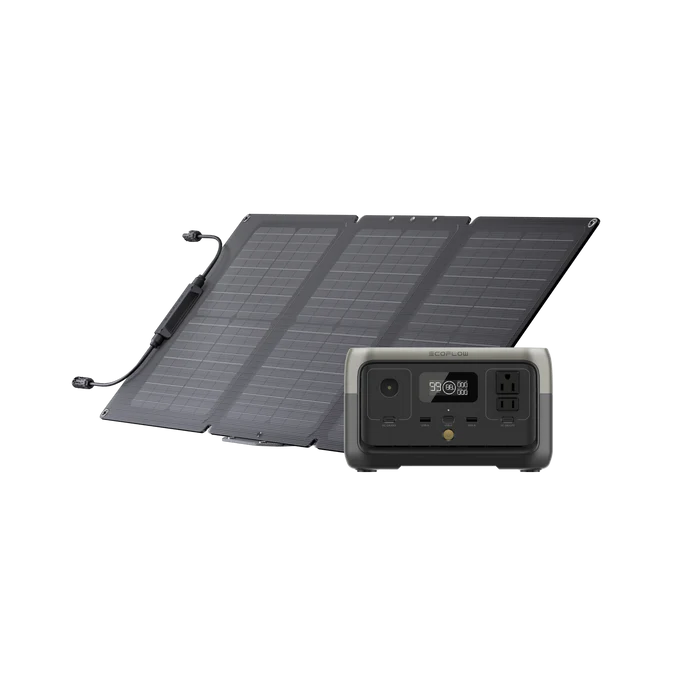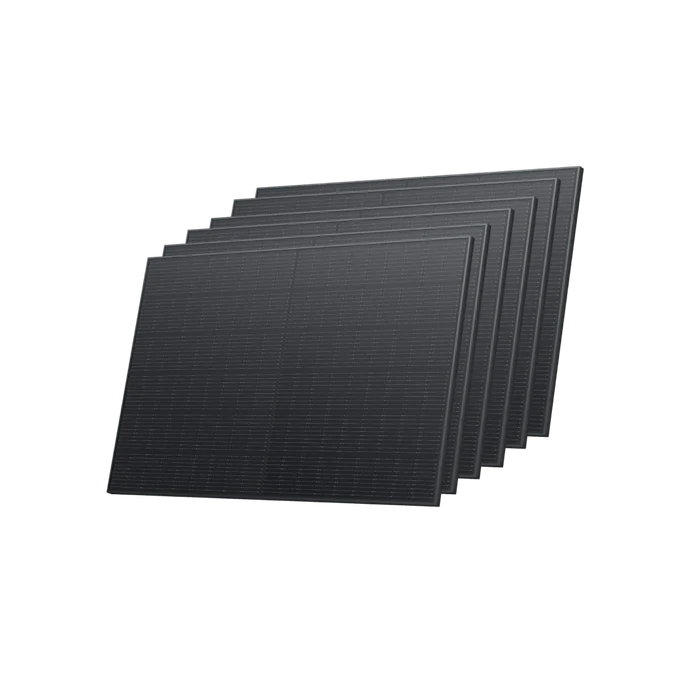How Do You Calculate How Many Solar Panels Will Fit on My Roof?
As more homeowners embrace renewable energy, the question "How many solar panels can I fit on my roof?" becomes increasingly relevant. This question isn't just out of curiosity—it helps homeowners understand how much energy they can generate from their roof and how to make the most of the available space. Let's go over some fundamentals so we can utilize your energy in a better way and make informed decisions.
How Many Panels Fit Your Roof
You have to know some things before you can respond to this query. These consist of how much space is available in your roof for installation, as well as your roof design.
Roof Size and Available Space
The space on your roof determines how many solar panels can be installed. However, not all of your roof is usable—obstructions such as chimneys, skylights, and vents will take up space, reducing the area available for panels.
Calculate your available roof space
Measure your roof's usable area: Find the length and width of your flat roof spaces.
Subtract space taken by obstacles: Measure and remove the space taken up by chimneys, vents, and other obstacles.
Avoid shaded areas: Ensure that the panels won't be placed in areas where shadows from obstructions will reduce their efficiency.
Roof Shape and Design
Your roof design will significantly contribute to determining how many panels can be accommodated. Irregular patterns, steep pitches, as well as any prevailing obstructions such as vents or chimneys, can make it difficult to place panels in an efficient manner. However, sloping roofs offer not only increased ease of use but maximum installation capacity.
● Gable roofs: These are ideal for solar panel installation, offering large, unobstructed spaces.
● Hip roofs: These have sloped surfaces but can still accommodate panels if planned well.
● Flat roofs: These are the easiest to work with, as you have maximum flexibility in positioning panels.
The next step is to determine how many panels you actually need.
Main Factors Deciding Roof Solar Output
There would be some determining factors of your panel's power output.
Efficiency of Solar Panels
The panels' efficiency is the most important factor in determining how much energy they produce. Monocrystalline panels with the highest efficiencies have high levels of energy in spite of small installation spaces.
Local Climate and Light Conditions
Your region's climate will impact your production of solar energy. Regions with greater sunshine will of course produce further energy. There are web-based tools, such as solar maps, as well as apps, available to estimate your region's solar potential.
Roof Orientation and Tilt
Your orientation of your roof, as well as your roof's angle, as already stated, will help determine the maximum power output of your panels. Panels facing south—the northern hemisphere especially—and at the best tilt will have the highest power levels.
5 Factors for Accurate Solar Panel Needs
When determining how many solar panels you will need in order to accurately meet your power demands, several things will be involved. These will ensure your solar system is not only effective but also cost-effective:
Energy Consumption
Start by reviewing your past electricity bills in order to have an understanding of your average monthly consumption of electricity. The higher your consumption as a household, the larger your potential gains will be from using solar power. If your consumption is highest, you will need larger panels in order to have enough power. By understanding clearly your consumption, you will have a better idea of how much solar power you will need.
Dimensions and Types of Solar Panels
The size and type of solar panels impact how many you need. Panels typically measure around 5.5 to 6 feet long and 3 feet wide. Larger panels cover more area, but you'll need to balance size with available roof space.
Efficiency
Higher-efficiency panels, like monocrystalline, convert more sunlight into electricity, meaning you'll need fewer panels. Efficiency ranges from 15% to 22%.
Types of Panels
● Monocrystalline: Most efficient (20-22%), best for limited space.
● Polycrystalline: Less efficient (15-18%), more affordable.
● Thin-Film: Least efficient (10-12%), but cost-effective and flexible, requiring more panels for the same power.
Maximizing Solar Panel Capacity
You need to be wary of the mere installation of as many panels as possible, as this may lead to inefficiencies. Solar panels are usually connected together in series as well as in parallel; when installed in parallel, the output is increased in general. In determining how many panels you need, you have to divide your house's energy requirement in general by your panels' watt output.
Maintenance Costs
The panels have been developed with long-term longevity in mind; nonetheless, environmental factors such as dust, winds, and harsh weather can impact operational efficacy. In regions with high occurrences of storms or dust storms, the panels may lose efficiency, requiring longer upkeep earlier than anticipated. Therefore, opting to have additional panels installed may not necessarily be the most cost-effective option. In some cases, it would be better to have fewer panels in place, consequently reducing the chances of reduced efficacy while ending up saving on upkeep in the long run.
Future Energy Needs
If you ever think of buying electric automobiles or any power-hungry appliances that will eventually be powered by solar electricity, it will be advisable to invest in some extra panels at present. That move of foresight will ensure you have enough power to cater to your future needs while at the same time reducing your reliance on outside power sources. Further, buying some extra solar panels will secure your power requirements in the future, making sure your installation is capable of handling increased power consumption without requiring future upgrades.


How Many Solar Panels Will Fit on My Roof?
This table shows estimated panel counts based on total roof area, assuming 70% usability (to exclude vents, chimneys, and shaded zones), and standard 18 sq ft panels (roughly 6 ft × 3 ft, 350W each):
| Total Roof Area (sq ft) | Usable Area (70%) | Estimated Panel Count | Estimated System Size (kW) |
| 600 | 420 | ~23 panels | ~8.0 kW |
| 800 | 560 | ~31 panels | ~10.9 kW |
| 1,000 | 700 | ~39 panels | ~13.7 kW |
| 1,500 | 1,050 | ~58 panels | ~20.3 kW |
| 2,000 | 1,400 | ~78 panels | ~27.3 kW |
| 2,500 | 1,750 | ~97 panels | ~34.0 kW |
| 3,000 | 2,100 | ~116 panels | ~40.6 kW |
Pros and Cons of Installing More Solar Panels Than Needed
Once you've calculated the required solar energy and have extra space on your roof, the next step is to decide whether to install more panels than necessary. Adding extra panels can increase energy output, but it also comes with additional costs and space considerations. Let's explore the pros and cons of more solar panels.
Advantages
● Increased Energy Production: More panels mean more energy, which can reduce reliance on the grid. For homeowners looking to maximize their energy output, choosing an efficient and portable solar panel is key. The EcoFlow NextGen 220W Bifacial Portable Solar Panel, with its bifacial design, collects more sunlight, providing up to 25% additional energy yield compared to traditional single-sided panels. Its adjustable angle bracket and lightweight, compact design make it perfect for a variety of roof spaces, whether in a city apartment or a suburban home.
● Offset More Energy Usage: Extra panels not only store energy for later use but also can be sold back to the grid, potentially providing additional income or lowering future energy costs.
● Future-Proofing: Installing extra panels can help meet future energy needs, like adding electric vehicles or more energy-intensive appliances, ensuring your system can handle the increased load efficiently without further upgrades.
Disadvantages
● Higher Upfront Costs: More panels mean higher initial installation costs, which could result in a longer payback period, delaying the return on investment and adding financial strain.
● Space Constraints: Installing too many panels can reduce valuable roof space for other uses, such as future home expansions or aesthetic considerations that might affect property value.
● Maintenance Challenges: More panels require more maintenance, which increases both the complexity of upkeep and the overall cost of keeping the system running efficiently over time.
Choosing the Right Solar Panel
By looking at your roof space and the efficiency of the panels, you can figure out the right solar panels for your home. Based on your current energy use and future needs, you can decide if adding a few extra panels makes sense to keep your system running smoothly now and later.


FAQs about Installing on a Roof
Q1: What if my roof has a slope or a unique shape?
Sloped or unique roofs can still fit solar panels, but they may limit the number of panels. A professional installer can help maximize space and ensure efficient placement, even with irregular shapes.
Q2: What if my roof has obstructions?
Obstacles like chimneys or vents reduce available space. Measure their size and adjust panel placement accordingly. Shading from these obstructions can also affect panel performance, so consider using microinverters or optimizers.
Q3: What is the best roof material for solar panels?
Most roof materials are suitable for solar panel installation, including asphalt shingles, metal, and tiles, work well for solar panels. Asphalt is easiest and cheapest, metal is durable but more costly, and tile roofs may require special mounting hardware.